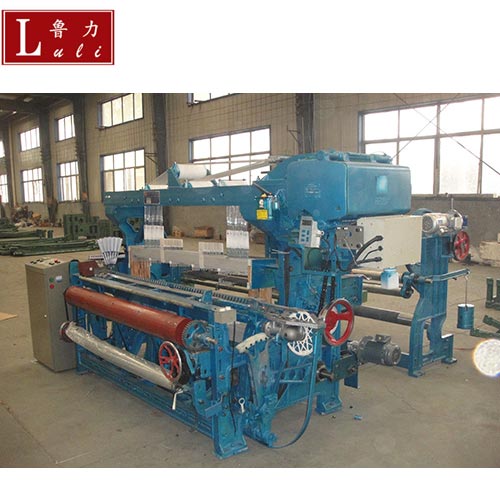- 日本語
- 한국어
- العربية
- Euskal
- Azərbaycan
- Slovenský jazyk
- Македонски
- Lietuvos
- Eesti Keel
- Română
- Slovenski
- मराठी
- Srpski језик
- ελληνικά
- український
- Javanese
- فارسی
- தமிழ்
- తెలుగు
- नेपाली
- Burmese
- български
- ລາວ
- Latine
- Қазақша
- Malay
- বাংলা ভাষার
- Dansk
- Suomi
- हिन्दी
- Pilipino
- Türkçe
- Gaeilge
- Indonesia
- Norsk
- تمل
- Español
- Português
- русский
- Français
- Deutsch
- tiếng Việt
- Italiano
- Nederlands
- ภาษาไทย
- Polski
- Svenska
- magyar
- Yoruba
How to deal with the "three jumps" defects of rapier looms?
2020-09-23
The rapier loom is currently the most widely used shuttleless loom. In addition to the characteristics of high-speed, high-automation, and high-efficiency production of the shuttleless loom, its active weft insertion method has strong variety adaptability and can adapt to Weft insertion of various yarns. Owning a rapier loom can save a lot of labor, so maintenance becomes a very important thing. What should I do when the rapier loom has defects?
1.Start with each process of pre-spinning and semi-finished products
1. To clean the falling objects, by adjusting the a036 and a076 dust bar spacing, the falling object rate is changed from 2.57% to 4.43%; the carding falling objects, by adjusting the rear belly falling object distance, the falling object rate is changed from 5.2% Into about 6.5%. After adjustment, the number of hemp rods and skins on the yarn surface is reduced, and the chance of mixing during weaving is also reduced, which can reduce "triple jump" defects by 20% to 30%.
2. Rapier looms have higher requirements for the quality of the raw yarn, the longer the unevenness of the long segment, the smaller the better, generally 3% to 4%, the evenness cv value is 20% to 25%, the single yarn strength cv value Between 18% and 20%.
3. To improve the quality of joints, the end length is generally 1.5mm ~ 4mm is the best, and the joints with larger twists should be specially prevented from small braids.
4. The warping requirements ensure the "three spirits", that is, the tension ring can rotate flexibly, brake flexibly, and automatically stop when the ends are broken. At the same time, the side yarns are slightly heavier to make the full warp tension even.
5. Improve the quality of sizing, improve the definition of warp shedding, choose sizing reasonably according to the variety and formulate sizing rate. Generally, the sizing rate of linen and cotton is 8%-9%, which can meet the requirement of forming a smooth and wear-resistant sizing film on the surface of warp yarn. To correctly control the moisture regain, if the relative humidity of the weaving workshop is above 80%, the moisture regain of the sizing can be controlled at about 7% to 8%; the elongation of the sizing should be controlled reasonably, and the sizing fabric should be controlled below 1%; About 10% to 15%, which can meet the requirements of rapier loom fabrics.

2.The timing of opening and entering the sword should be appropriate
Generally, there are more opportunities for yarn skipping defects on the side of the weft sword. Therefore, different configurations can be used to adjust the weaving parameters on both sides. That is, the time of the weft sword is properly delayed, and the time of the weft sword is properly advanced to make the feeding The weft sword enters the clearer weaving mouth.
Generally, the opening time of linen and cotton varieties should be 290°~300°, and the time of entering the sword should be 70°~75°. When entering the sword, the position of the weft feeding sword head is 4-6 guide pieces from the weaving mouth, and the position of the weft sword head is 2 ~ 4 guide rails, but also to ensure that the sword enters slowly and the sword exits quickly, so that the sword has enough time to pass through the clear kendo and reduce the chance of yarn skipping.
3.Adjustment of the position line
Adjust the height of the position line, generally only adjust the height of the warp stop and the rear beam. When the warp drop frame and the back beam are raised, the tension difference between the upper and lower warp yarns will increase. When the knitting mouth is fully opened, the lower warp yarns are tight and the upper warp yarns are loose, so that the warp yarns are arranged evenly and a fuller cloth surface can be obtained.
If it is lifted too high, the upper warp yarns will be too loose and the warp yarns will stick to each other, making the opening unclear and easy to cause star jumps. The height of the back beam of general linen and cotton varieties is 70mm~80mm, the height of the warp stop is 30mm~40mm, and both ends should be kept level.


